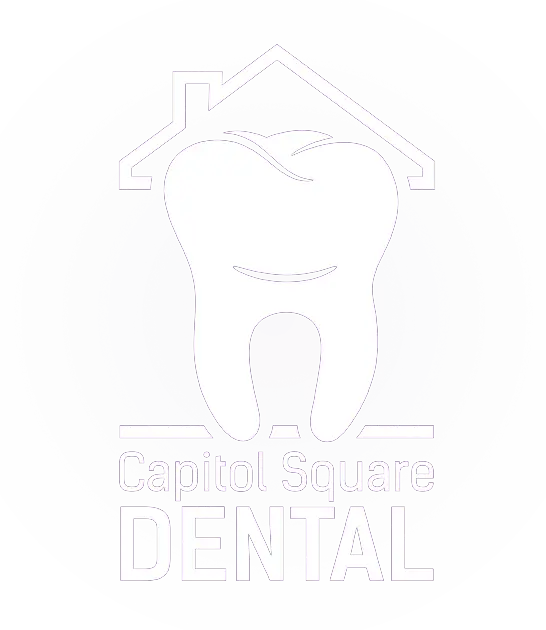Does Invisalign Hurt?
Posted on 5/1/2023 by Office at Capitol Square Dental |

Tooth misalignments are one of the most common cosmetic dental issues that can also have an impact on functionality. For many years, the primary method for resolving these issues was traditional metal braces. However, since their introduction to the market in the late 1990s, clear aligners have surged in popularity.
The primary reasons these have become so popular are because they are discreet, comfortable, and convenient. The most popular and well-known brand of aligners is Invisalign. However, while comfort is one of the primary advantages of Invisalign, many patients still experience some discomfort.
For most patients, pain with Invisalign only lasts for the first few days after placing a new aligner. Pain tolerance is also a major factor in whether or not a patient experiences pain with Invisalign treatment. Some patients never have any problems with pain.
If you do have pain that lasts longer than a week, you may have an underlying condition that needs attention. In this article, we’ll explore more on the topic of pain with Invisalign treatment, what you can do to relieve it, and when you should contact the dentist.
WHAT IS INVISALIGN?
Invisalign is a discreet alternative to traditional braces for resolving mild to moderate malocclusions. This treatment is a series of clear aligners designed to gradually shift teeth into their appropriate positions within the jaw.
HOW LONG DOES INVISALIGN HURT?
Research shows that pain associated with Invisalign aligners usually lasts about 2 or 3 days after putting a new aligner in. This means that since the trays must be changed out every 1 to 3 weeks, you may experience pain off and on throughout treatment. On the other hand, some patients find that as time goes on, the pain is less noticeable.
WHEN IS THE INVISALIGN PAIN A CONCERN?
While Invisalign is not as painful as traditional braces, there is a chance that you may experience mild to moderate pain within the first week. This pain may be felt in your teeth, tongue, or jaw.
However, the pain should not interfere with your daily activities. If the pain is extreme or if you experience any of the following, you should contact the dentist right away:
| • |
Bleeding teeth/gums
|
| • |
Pain when eating/drinking or swallowing
|
| • |
Sensitivity to heat/cold
|
| • |
Facial swelling |
HOW TO DEAL WITH INVISALIGN PAIN?
Pain with Invisalign is typically minor and temporary. However, some patients find that it is too uncomfortable to ignore. The good news is, there are solutions for dealing with Invisalign pain.
DENTAL WAX
In some cases, dental wax can be used to alleviate gum pain associated with Invisalign trays. Simply apply a small amount of wax along the tops of the aligners, where they are usually the roughest. This will usually eliminate the friction that is causing your gum pain.
OTC MEDICATIONS
Typically, the pain is most severe during the first few days. Many patients find that OTC medications can help alleviate pain. However, you may need to consult with your medical provider to ensure that these medications will not interact with any medications you may be taking or any underlying medical conditions you may have.
CHANGE EATING HABITS
Once your mouth is ready, implants can be placed. We begin this process by making an incision in the gum and drilling a hole in the jawbone. The implant screw is placed in the hole and the incision will be stitched close. For patients who are missing all of their teeth, a temporary overdenture may be used so that you are not completely without teeth.
AVOID REMOVING TRAYS
Finally, while it may seem counterintuitive, you should avoid taking the aligners out for an extended period of time- unless directed to by your orthodontist. In fact, for best results, they should be worn for at least 22 hours a day. Taking them out for any longer than recommended can cause your pain tolerance to decrease.
IS INVISALIGN WORTH IT?
While you may have some minor pain with Invisalign treatment, most patients would agree that the advantages of Invisalign make it well worth it.
WHEN TO SEE A DOCTOR?
When you are wearing Invisalign aligners, it’s important to remember that minor discomfort is normal. Also, chances are, you will have mild pain every time you switch to new aligners. There’s no need to panic.
However, if the pain is intense or if it lasts for more than a week, you should contact the dentist. They may be able to make some adjustments to your aligners, such as filing down the top edges if they are causing irritation to your gums.
If the pain worsens over time or is worse with a new set than with the previous one, you should have a discussion with your orthodontist. They may be able to adjust the trays so that they fit more comfortably and, if all else fails, they may be able to get a new set of aligners.
INVISALIGN FAQS
Dr. Mehrdad Safavian strives to create a welcoming, compassionate practice, which is why he and his staff are ready to answer any questions you may have. Below are some of the most common questions we’ve gotten over the years about Invisalign treatment.
CAN YOU EAT WITH INVISALIGN?
Any time you eat or drink anything besides water, you should remove your Invisalign aligners. This is because eating and drinking while wearing your aligners could cause damage the aligners, as well as
HOW LONG DOES INVISALIGN TAKE?
The average treatment timeline for Invisalign clear aligners is 12 to 18 months. However, it is important to note that some patients see a resolution within the first 6 months, while others may need up to 24 months.
DOES INVISALIGN WORK?
Yes, research has proven Invisalign to be effective for resolving most mild to moderate malocclusions.
HOW TO CLEAN INVISALIGN?
Invisalign clear aligners should be cleaned once daily with a soft-bristled toothbrush and dye-free, perfume-free soap.
HOW MUCH DOES INVISALIGN COST?
The cost of Invisalign ranges from around $1,500 to $8,000, depending on the severity of your malocclusion, which determines the number of aligners and length of time to wear them.
CAN INVISALIGN FIX AN OVERBITE?
Yes, research has proven that Invisalign is effective for resolving most cases of mild to moderate overbite. |
|
